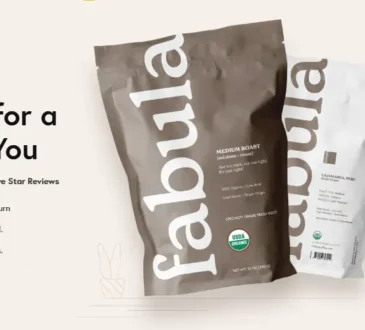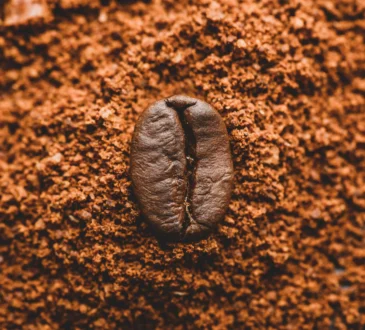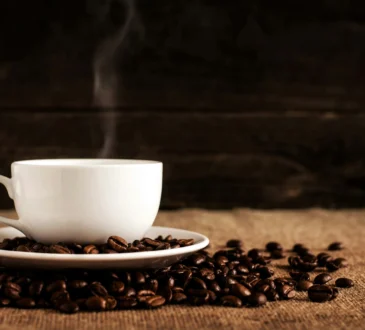
 Shop Our Best Selling 16 oz Liquid Caffeine!
Shop Our Best Selling 16 oz Liquid Caffeine!
Coffee. That aromatic brew that kickstarts our mornings, fuels our afternoons, and sometimes even powers our late nights. It’s a global love affair, but amidst the rich flavors and comforting warmth, a crucial question often lingers: just how much caffeine am I really drinking? Understanding the caffeine content of your favorite coffee is essential for managing your intake and ensuring it aligns with your health and lifestyle. This comprehensive guide dives deep into the world of caffeine in coffee, exploring the variations across different types, brewing methods, and serving sizes.
How Much Caffeine in Coffee? Understanding the Basics
A standard 8-ounce cup of brewed coffee typically contains around 95 milligrams of caffeine. However, this is a general average, and the actual amount can fluctuate significantly. Think of it like this: every cup of coffee is a unique snowflake – its caffeine content influenced by a variety of factors. So, while you might have a ballpark idea of how much caffeine in coffee you consume, it’s not always a precise science.
Also Read: How Coffee Can Help You Lose Weight – A 2025 Guide to Brewing Off the Pounds
How Much Caffeine in Instant Coffee?
Instant coffee offers a convenient and speedy caffeine boost. A single serving usually delivers between 30 and 50 milligrams of caffeine. While generally lower in caffeine than brewed coffee, instant coffee still contributes to your overall daily intake. It’s always a good idea to check the specific brand’s instructions, as serving sizes and concentrations can vary. Think of it as the express lane to caffeine, but still worth paying attention to.
How Much Caffeine is in Cold Brew Coffee?
Cold brew coffee has taken the coffee world by storm, but its caffeine content often raises eyebrows. The cold brew process, which involves steeping coffee grounds in cold water for an extended period, can extract more caffeine than traditional hot brewing methods. This means how much caffeine is in cold brew coffee can be surprisingly high, sometimes even exceeding that of regular coffee. A typical serving can range from 100 to 200 milligrams or more, especially in concentrated forms. So, that smooth, mellow cold brew might be packing a bigger caffeine punch than you realize.
Also Read: Fabula Coffee Review 2025 – The Best Mold Free Coffee
How Much Caffeine in Espresso Coffee?
Espresso is renowned for its intense flavor and concentrated caffeine. A single shot of espresso (about 1 ounce) contains approximately 63 milligrams of caffeine. However, how much caffeine in espresso coffee you ultimately consume depends on how many shots go into your drink. Espresso-based beverages like lattes and cappuccinos typically contain one or two shots, so their caffeine content will vary accordingly. It’s a common misconception that espresso has significantly more caffeine than regular coffee, but it’s more about the concentration of caffeine in that small, potent shot.
How Much Caffeine in 1 Cup of Coffee (12oz)? Understanding Serving Sizes
When we talk about “a cup of coffee,” the size can be rather ambiguous. A standard “cup” is often considered 8 ounces, but many mugs and to-go cups are considerably larger. How much caffeine in 1 cup of coffee (12oz) you’re getting will naturally be higher than in an 8-ounce cup. A 12-ounce cup of coffee can contain anywhere from 120 to 180 milligrams of caffeine, or even more, depending on the factors we’ve discussed. So, that oversized mug might be delivering a bigger caffeine dose than you initially anticipated.
Caffeine Percentage in Coffee: Myth vs. Reality
Pinpointing a precise caffeine percentage in coffee is tricky. Caffeine content is measured in milligrams, not as a percentage. The amount of caffeine varies too much to be accurately represented by a fixed percentage. While some sources might offer a general range, it’s more accurate and helpful to focus on the milligrams of caffeine per serving. Think of it like trying to assign a single shade of green to all the leaves on a tree – there’s just too much variation.
How to Estimate Caffeine is in Coffee Cup (A Practical Guide)
While precise caffeine calculations require lab equipment, you can make some estimations if you have specific information:
-
Know the Caffeine Content per Gram of Coffee: Some coffee manufacturers provide this information, usually expressed as milligrams of caffeine per gram of dry coffee grounds.
-
Determine the Grams of Coffee Used: This depends on your brewing method and preferred strength.
-
Calculate: Multiply the caffeine content per gram by the grams of coffee used. This gives you the total caffeine in the brewed coffee. Then, divide by the number of servings to find the caffeine per cup.
- Example: If your coffee has 20mg of caffeine per gram of coffee grounds, and you use 15 grams of coffee to brew a pot, the total caffeine would be 20mg/gram * 15 grams = 300mg. If the pot makes 4 cups, each cup would have approximately 75mg of caffeine.
Keep in mind that this is just an estimation. Factors like bean type, roast, and brewing method still influence the final caffeine content.
Factors Affecting Caffeine Content: The Key Variables
Several key factors influence how much caffeine ends up in your cup:
- Coffee Bean Type: Robusta beans generally contain more caffeine than Arabica beans.
- Roast Level: Lighter roasts tend to have slightly more caffeine than darker roasts.
- Brewing Method: Different brewing methods extract varying amounts of caffeine.
- Serving Size: A larger cup of coffee naturally has more caffeine.
Recommended Caffeine Intake: Staying Within Healthy Limits
The FDA recommends a daily caffeine intake of no more than 400 milligrams for healthy adults. However, individual sensitivity to caffeine varies greatly. Some people are highly sensitive, while others can tolerate larger amounts. Excessive caffeine consumption can lead to various side effects, including anxiety, insomnia, and rapid heartbeat. It’s essential to listen to your body and understand your own caffeine tolerance.
Also Read: Why Mold Free Coffee Matters for Your Health 2025
Tips for Managing Caffeine Intake
Smart Strategies for a Balanced Lifestyle
- Track Your Intake: Keep a record of how much caffeine you consume throughout the day.
- Choose Lower-Caffeine Options: Opt for decaf coffee or tea.
- Hydrate Adequately: Drink plenty of water to help your body process caffeine.
- Be Mindful of Hidden Caffeine: Remember that caffeine is present in other beverages and foods, such as chocolate and energy drinks.
Conclusion: Savor Your Coffee, Mindfully
How much caffeine is in coffee isn’t a simple, one-size-fits-all answer. It depends on a complex interplay of factors, from the type of coffee beans used to the brewing method and serving size. Being mindful of these variables and tracking your intake can help you enjoy your coffee responsibly and within recommended guidelines. So, whether you’re a fan of instant coffee, cold brew, or a classic espresso, understanding the caffeine content empowers you to make informed choices about your consumption and savor your coffee experience to the fullest.







